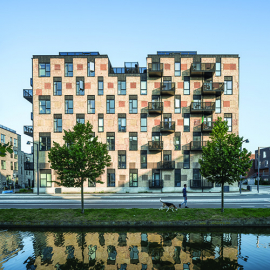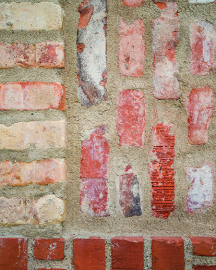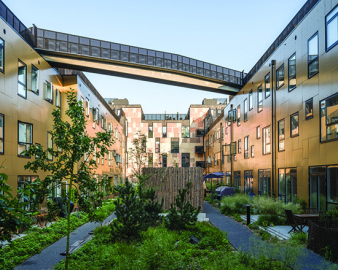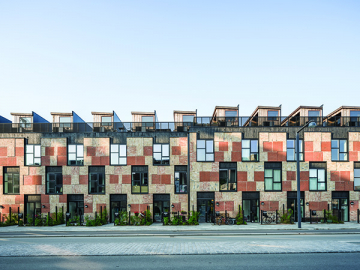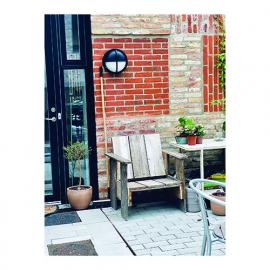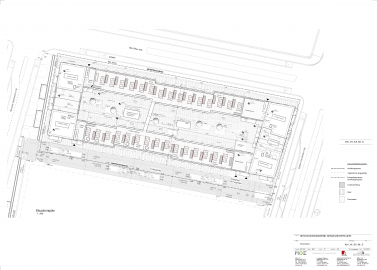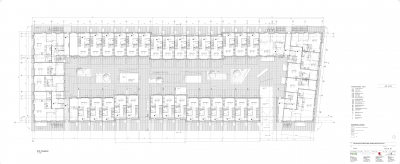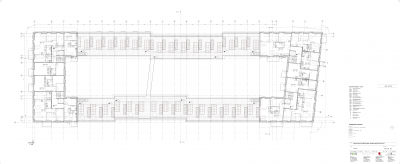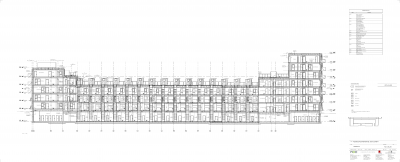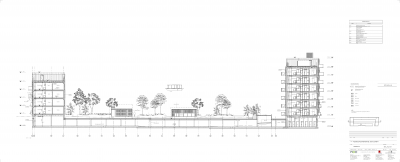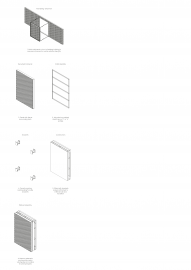The Resource Rows
The residential project Resource Rows in Copenhagen demonstrates a radical, replicable recycling approach to materials that significantly cuts construction’s carbon footprint. Without adding cost the 92 homes dwelling has achieved a total CO2 reduction of 29% on building level and saved 463 tonnes of waste according to LCA.
Ørestad Syd is a new development area in Copenhagen. As people move away from rural areas and towards cities, we witness an expansion of urban settlements. The abandoned rural homes are often demolished, resulting in large amounts of material being wasted. The Resource Rows utilizes demolition waste.
Neighbouring the nature area of Kalvebod Fælled, it is possible to get the best of both worlds. The scheme is arranged around an open courtyard, with two rows of three-storey terraced houses bookended by two five-storey apartment blocks. There is a shared courtyard and roofscape, which includes 29 rooftop houses. The green areas of this previously uninhabited district are thus reshaped into the green areas of the settlements shared spaces.
The Resource Rows address challenges related to climate, resource scarcity, waste, community and urbanisation. The goal is to contribute to lowering the industry’s CO2-emissions and material consumption, and ultimately contribute to making construction regenerative. The material innovation process was as interesting as the architecture and revitalized the architect in a role similar to the historic baumeisters.
With the client we wanted to explore how future cities can make the best use of all available resources. We concluded harvesting materials from old buildings is the future of new build. This way of thinking has great potential to generate economic, environmental, and social value. We explored the notion that all materials, buildings, cities, and people are resources that always maintain value.
The materials have been harvested and put into production by the architects. We developed methods for scaling the reuse of untapped resources in “construction waste” to build new homes, using sustainable, non toxic and certified materials! The result show that the utilization of existing resources has a positive direct impact on the environment!
By reusing waste wood and the walls from abandoned buildings as new facade elements, we save CO2 and virgin materials, while also getting a new building with history and character. These inherent stories also function as shared references binding the tennants closer together soiallyh. The blocks are made with a double skin structure. However, in the terraced houses, the outer brick panel skin is tied back to an inner timber frame.
Recycle materials includes façade bricks and aluminium, internal floors, exterior wood for terraces and decking and roof top houses including the windows. The exterior timber was waste form the crates used for transporting concrete element for the Copenhagen Metro. The wood has been applied an old Japanese technique charring the surface with fire to impregnate it.
A design will never be part of the solution unless it adds value to the project. Our LCA and LCC show that a rowhouse over 50 years saves 29% CO2 on building level and are cost-neutral to operate compared to benchmark.

